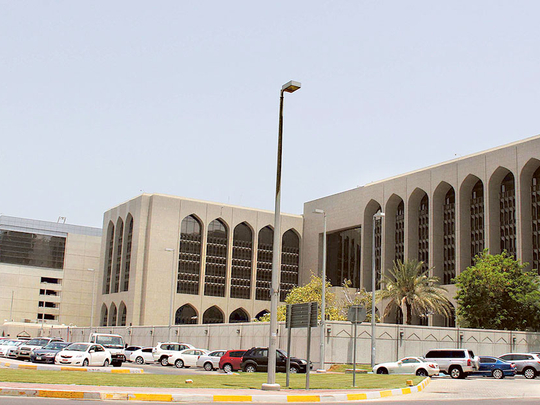
Dubai: Ever thought of investing in bonds and sukuk in a sovereign rating akin to developed market even with higher returns compared to developed market but slightly lower yields compared to the other Emerging markets peers, then you may want to look at Gulf Cooperation Council (GCC) bonds and sukuks.
Countries in the GCC have been taping the debt market to plug in deficits caused by plunging prices of oil from which these countries derive most of their revenues. The GCC countries have issued more than $40 billion of bonds and sukuk so far in the year, and indications are that these countries may issue $70 billion of debt this year. Even the rating is similar to that of developed markets.
For example, the UAE, which is considered as an emerging market, has a rating of AA from the Standard and Poor’s, which is similar to that of France, and New Zealand among others. But as far as returns are concerned, they might fare slightly lower than other emerging markets. For example, the Citi Group MENA Broad Bond Index returned 6,31 per cent till September end, while JP Morgan Emerging Market bond Index returned 15 per cent in the same time period.
“Overall, the probability of default risk in the region is materially lower than the global average, mainly as a result of the high ratings of issuers, their connection with the sovereigns, as well as a solid banking sector enjoying good access to broad capital markets, which enables easy refinancing of bonds,” Usman Ahmed, head of Fixed Income, Emirates NBD Asset Management, told Gulf News over email.
For instance, total outstanding bonds rated B+ or lower in the region are less than $3.5 billion and that is less than 1.8 per cent of the total GCC bond universe. There is no GCC bond rated in the C category, Ahmed added.
In addition to that, most GCC governments also benefit from large sovereign wealth fund assets and forex reserves, and low debt levels, giving these economies “some breathing room,” Ahmed said.
Another benefit of investing in this part of the world is their currency is pegged to the dollar, so there exists no currency risk unlike other emerging markets.
“The peg to the dollar is irrelevant for international investors as the majority of government issuance from the region is dollar denominated. If one is referring to local investors investing in dollar-denominated assets, there can only be upside if the pegs are abandoned (which is not our core thesis),” said Chandru Bhatia, Fixed Income Portfolio manager at Rasmala.
And even the fundamental factors have changed for good. Oil prices are stable trading above $50 per barrel, and there has been a delay in Federal Reserve raising rates, allowing more governments and corporates to issue the paper.
“Strong investor demand, low absolute dollar interest rates and attractive credit spreads provide a fertile backdrop for issuers to tap the market and avoid the potential clouds on the horizon,” Bhatia from Rasmala said.
And this is also making the pipeline strong.
“Some issuers in the region are on a borrowing spree to finance their fiscal gaps. We also believe that the GCC bond market could see a strong pipeline of new issuances in the coming months. In the current environment of lower interest rates, the “hunt for yield” is driving demand for US dollar bonds. Given expectations that oil prices may remain lower for longer, it is likely that issuers will continue to tap international markets in 2017,” said Emirates NBD’s Ahmed.
And even the GCC governments have been taking proactive steps to remove subsidy on fuel and meat and increase electricity charges among other structural reforms to reduce their expenditure amid sagging income from oil.
Mega offer
Amid all the positive fundamentals, Saudi Arabia, the biggest economy in the region, is planning to raise $10-15 billion before the US elections and the expected rate hike in December, and the issue is touted to be one of biggest issue in recent times.
“Demand from investors both regionally and internationally should be strong. Pricing remains a topic of debate,” said Ahmed.
The Kingdom has announced its intention to tap international capital markets as early as next week with their debut bond deals by issuing debt in five-, ten- and 30-year maturities.
Even Bhatia from Rasmala agreed.
“There will be significant institutional demand for Saudi Government bonds from international institutional investors, especially when a material portion of developed market government debt is trading at negative yields,” said Bhatia.












